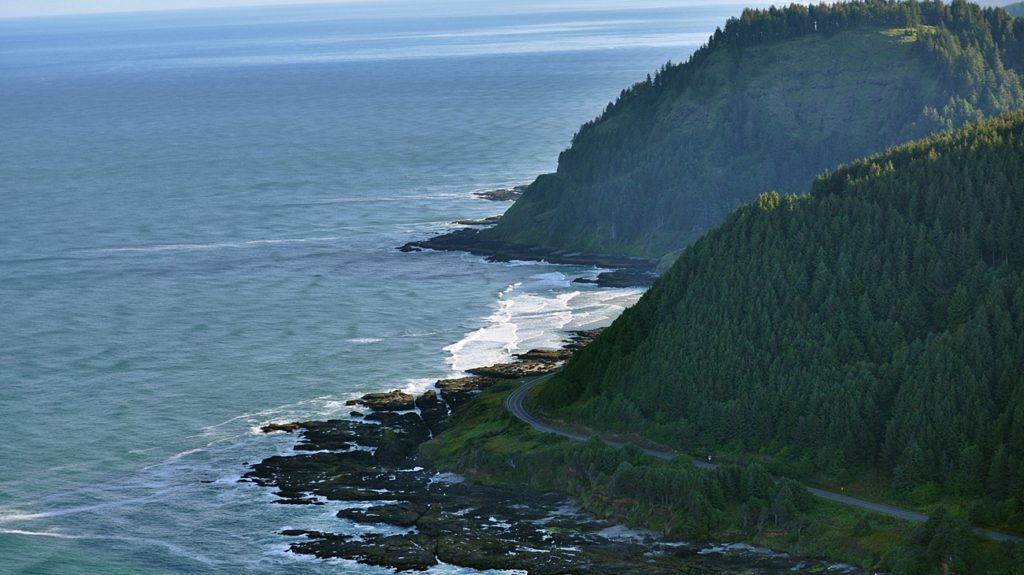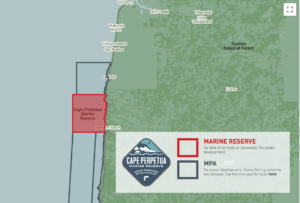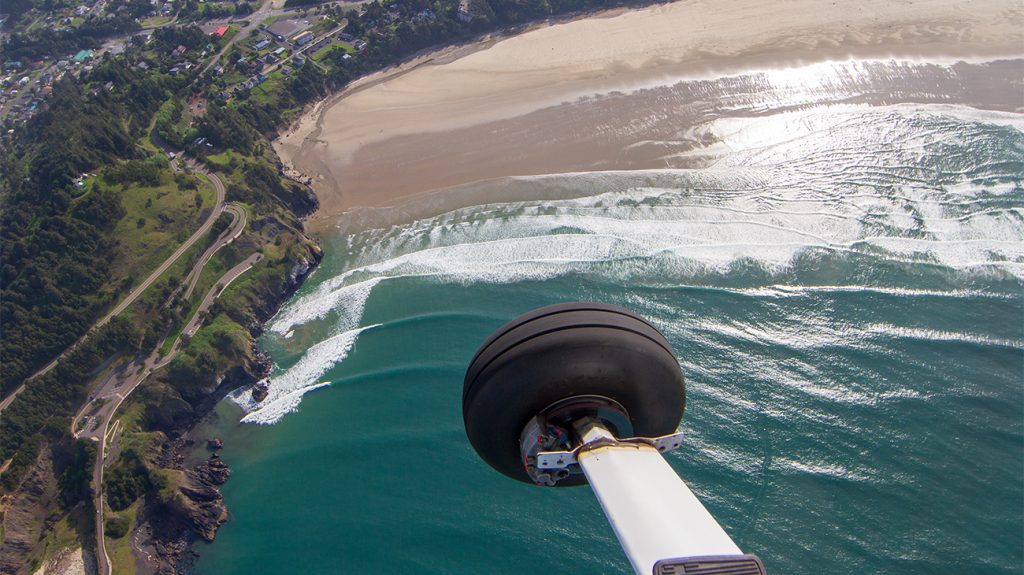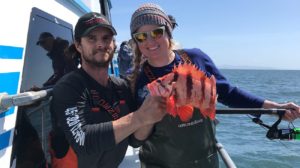
By DANA TIMS/YachatsNews.com
Efforts to include Cape Perpetua among Oregon’s state-protected coastal sanctuaries took more than a decade.
Now, after even more years of planning, the first management plan addressing scientific research and conservation goals for the 34-square-mile Cape Perpetua Marine Reserve is nearly ready for roll out.

A draft of the plan is available for review from the Oregon Department of Fish and Wildlife. Members of the public have until Feb. 28 to comment on the plan, which is expected to be released later this spring.
“Really, what the plan does is document what we are already doing,” said Cristen Don, the state agency’s program leader. “But it also contains lots of information that will guide future uses, as well.”
The Cape Perpetua Marine Reserve stretches from Yachats in the north to Florence in the south. It includes a marine reserve, which prohibits all extractive activities and ocean development, an area that protects marine life but which allows some fishing, and, a seabird protection area.
Cape Perpetua is not only the largest of Oregon’s five marine reserves, but it’s also hailed as having some of the most biologically diverse rocky intertidal habitats found anywhere in the Pacific Northwest.
“That’s why Cape Perpetua is such a hot spot for research,” Don said. “But there is still a lot of uncertainly in our knowledge of the ocean, especially near the shore. We’re hoping the type of research going on there will keep on filling in the blanks of what we don’t know.”
Some of that research, for instance, includes hook-and-line surveys, where volunteer anglers help catch, measure and release the diverse species of rockfish and lingcod that populate the waters of Oregon’s central coast. The surveys are done once every two years, and are coming back to Cape Perpetua later this year.
Other ongoing work is focusing on why, for the past two decades, the near-shore waters around Cape Perpetua have experienced episodes of “hypoxia,” or low oxygen levels, as well as acidification. Both conditions are associated with strong summer upwelling activity and are seen as signs of a changing climate and changing ocean conditions.
“We know the ocean is changing and it has to do with CO2 emissions and their absorption by the ocean,” Don said. “They are definitely connected, but we’re not yet sure how. We hope the research can help piece that together.”

Reserve push began 20 years ago
The push to designate marine reserves stretching three miles out to the edge of Oregon’s territorial waters began in the early 2000s. The effort was driven, in part, by the overfishing that had led to a near-collapse of rockfish populations.
Opposition by commercial fishing interests delayed the effort, but in 2009, then-Gov. Ted Kulongoski signed House Bill 3013, which directed implementation of the first two marine reserves at Redfish Rocks, just south of Port Orford, and Otter Rock, near Newport.

In 2012, the Oregon Legislature passed a bill approving three additional marine reserves. In addition to Cape Perpetua, they included Cape Falcon, near Manzanita, and Cascade Head, near Lincoln City.
“Taken together, what the marine reserves do is become a fulcrum for Oregonians to learn about our dependence on the ocean,” said Phillip Johnson, executive director of Oregon Shores Conservation Coalition, an advocacy group. “And they really have become nurseries for filling adjacent areas with new and vibrant populations of fish. In fact, we’re already seeing that happen.”
The sometimes intense opposition sparked by reserves proposals early on appears to have waned considerably, Johnson said.
“As far as I can see, the fishing community has largely adapted to it,’’ he said. “They’ve adjusted their practices and, for the most part, have embraced the concept.”
Some of that may be due to pure practicality, said Yelena Nowak, director of the Oregon Trawl Commission.
“Marine reserves tend to be sited in rocky areas,” she said. “The waters are shallow enough that the rocks would cut nets intended to catch rockfish.”

Fishing changes benefit reserves
Another key factor is the recent reopening to trawlers of large swaths of federally managed waters, farther than three miles offshore. Rapidly rebounding groundfish populations in those waters prompted the reopening, which as of Jan. 1 restored trawler access to nearly 3,000 square miles of ocean.
“The fishing in those waters now looks absolutely remarkable,” Nowak said. “This is truly a successful environmental comeback story.”

The real measure of any ongoing opposition to state-managed marine reserves will be felt in Salem, however, since the laws that spawned the reserves call for a legislative review of the entire program in 2023.
At stake is the $2 million in taxpayer dollars that are spent biennially to maintain the full-time staff of five employees who oversee the program. That includes the $106,000 that the state pays to the Oregon State Police every two years for monitoring and enforcement purposes.
Paul Engelmeyer, who manages Portland Audubon’s 10 Mile Creek Sanctuary south of Yachats, said he thinks the conservation success story being written at Cape Perpetua and other marine reserves will help ensure the program’s long-term survival.
“Increasingly, marine reserves are finding great popularity not only here, but all over the world,” he said. “They are good investments, and I think that realization is really starting to set in.”
— Dana Tims is an Oregon freelance writer who can be reached at danatims2@gmail.com



Keep funding Cape Perpetua. It’s one of the most beautiful places in the world.